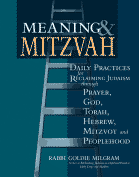
Jewish Labyrinth image is from Pardes Rimonim by Rabbi Moshe Cordevero, the RAMAK, drawn in about 1548 CE.
The center of every traditional labyrinth is Jerusalem, where the Holy of Holiness now exists in our spiritual imagination as an Axis Mundi--a place of spiritual alignment. The Biblical Abraham originally called the city “Yireh,” seeing and the story in Genesis 14 relates that was blessed by the "King of Shalem--wholeness", who, as the text is ambiguous either became his ally or is a metaphor for the divine. So Jerusalem is made up of Y'ru--seeing, also meaning City of, and Shalem--meaning compleness or wholeness.
A traditional labyrinth is a pilgrimage meditation to perceiving yourself as existing in wholeness, wellbeing, and imaging Jerusalem's residents at peace. It is also often undertaken as a meditation upon moving from inner wilderness to wholeness, to pure awe and respect for Creator and Creation and one's place within the whole and within the holy." Part of such labyrinth meditations are a recognition that Jerusalem is not just a city of stone and mortar, but a state of mind and spirit.
Even building a labyrinth brings a sense of holy dedication inside of those who do so, as we read in Exodus: “Build for me a sanctuary and I will dwell among you.”
As we make pilgrimage in the labyrinthian sanctuary toward the whole and the holy, perhaps we will experience the awe that caused our father Jacob to cry out, “Mah norah hamakom hazeh!” “How awesome is this place! Why, this is a house of God!”
And when we emerge, perhaps we will pray:
“N'varekh et Shechinah, lev yerushalayim, lev ha-olam."
“Let us bless Shechinah, Holy Presence, lev Yerushalayim, heart of the world."
And one could conclude with a poem written by a contemporary rabbi, Rabbi Geela Rayzel Raphael, in the center of a labyrinth:
Nevarekh et m’kor ha-t’shuva
Nevarekh et galgalay torahtaynu
Ha-m’khadeshat et galgalay haz'manim
Nitbarekh bi-t’shuvataynu.
Let us bless the Source of our turning, Let us bless the circles of our learning.
Renewing our lives in the cycles of the seasons, May we be blessed in our re-turning.
And let us say together, Ameyn.

Learn more about Jewish prayer
from a spiritual perspective in
Meaning & Mitzvah: Daily Practices
for Reclaiming Judaism
through Prayer, God, Torah, Hebrew,
Mitzvot and Peoplehood
by Rabbi Dr. Goldie Milgram